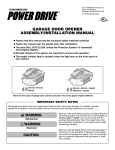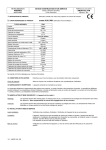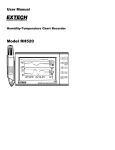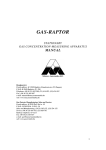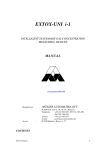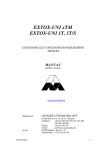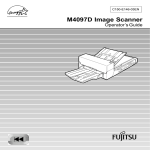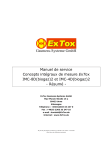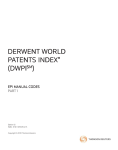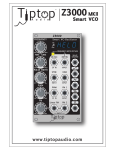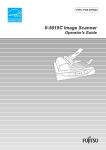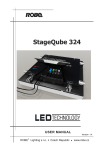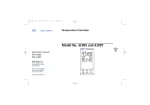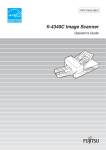Download Extox-Uni i-12 controller user manual
Transcript
EUi12mka.doc MŰSZER AUTOMATIKA KFT. H-2040 Budaörs, Komáromi u. 22. Pf. 296. Telephone: +36 23 365280, Fax: +36 23 365087 Plant: H-2030 Érd, Alsó u.10. Pf.56.Telephone: +36 23 365152 Fax: +36 23 365837 www.muszerautomatika.hu e-mail: [email protected] Manual Denomination: EXTOX-UNI i-12 Gas Concentration Measuring Apparatus Headquarters: Postal address: 2040 Budaörs, Komáromi utca 22. P.O.B.: 2040 Budaörs, Pf.: 296 Telephone: (23) 365-280, (23) 414-922, (23) 414-923 Fax: (23) 365-087 e-mail: [email protected] web: www.muszerautomatika.hu Manufaturing plant of Gas monitoring systems, sales and service: Postal address:H- 2030 Érd, Alsó u. 10. P.O.B . : 2030 Érd, POBOX.: 56 Sales and manufacture: (23) 365-152, (23) 524-152 Service:00 36 23 416-761, (23) 428-761 Railway telephone: 01-5211 Fax: (23) 365-837 e-mail: [email protected] web: www.gazerzekelo.hu Műszer Automatika Kft. . 1 / 24 EUi12mka.doc CONTENTS 1. PURPOSE 2. MAIN FEATURES 3. CONSTRUCTION AND OPERATION 3.1. Constructions 3.2. Remote Transmitters 3.3. Central Unit 3.4. Accessories 4. TYPE VERSIONS 5. INSTALLATION AND PUTTING INTO OPERATION 6. 7. 5.1. Installation Conditions 5.2. Placement of central unit and transmitters 5.3. Cabling 5.4. Conditions of putting into opertion, putting into opertion HANDLING AND OPERATING INSTRUCTIONS 6.1. Handling units and status signals 6.2. Connection points 6.3. Operation, handling and interpretation of signals 6.4. Cleaning CONDITIONS OF SAFE OPERATION 7.1. General conditions of safe operation 7.2. Contact protection aspects 7.3. Electromagnetic conformity (EMC) 7.4. Meanings of abbreviations and markings on device 8. TECHNICAL DATA 9. GUARANTEE 10. SERVICE, MAINTENANCE Műszer Automatika Kft. . 2 / 24 EUi12mka.doc 11. APPENDIX • Inner layout and connection points of EXTOX-UNI i-12 type gas concentration measuring equipment in version with display and handling unit • Inner layout and connection points of EXTOX-UNI i-12/KN type gas concentration measuring equipment • Cabling EXTOX-UNI i-12 gas concentration measuring equipment • Cabling of EXTOX-UNI i-12/KN type gas concentration measuring equipment • Transmitter(s) Manual(s) supplied together with the apparatus Műszer Automatika Kft. . 3 / 24 EUi12mka.doc 1. PURPOSE EXTOX-UNI i-12 is a general purpose gas and solvent detecting apparatus which mainly meets the requirements of industrial users in accordance with the regulations of modern European directives and standards. Its purpose is the measurement of concentration of explosive and toxic materials mixed in the air. On the basis of measuring results and the limit values of dangerous materials it signals in advance the evolution of dangerous situation. It can make automatic intervention control to avoid explosion – or toxic danger. 2. MAIN FEATURES ∗ Concentration measurement of explosive, toxic and other materials in measuring ranges adjusted to Lower Explosion Limit values or health limit values ∗ Installed system with remote transmitters ∗ Application of explosion-proof or non-explosion-proof remote transmitters with different measuring principles depending on zone classification of installation location and measuring ranges. ∗ Radial cabling system between the centre and remote transmitters ∗ Microprocessor type control unit for operating 12 pcs of transmitters ∗ Reliable danger- and self-error signaing, operated by independent processors operable independantly from each other and parallel signal processing ∗ 4 programmable signal levels for each transmitter separately adjustable ∗ Acoustic signal by differentiated control per signal level, acknowledgable ∗ Intelligent multifunction display (optional!) ∗ Real time event logging ∗ Separate voltage output of 24 V for light and acoustic signals ∗ Possibility of building- in of 32pcs interventrion control relays ∗ Intervention control relays operated by programmable logical link ∗ Intervention control possibility by zones ∗ Construction protected against non-professional maintenance ∗ Indication of maintennace neccessity Műszer Automatika Kft. . 4 / 24 EUi12mka.doc 3. CONSTRUCTION AND OPERATION 3.1. Constructions The apparatus consists of remote transmitter(s) and central unit according to application requirements. It is in numerous variations ands made with at most 12 pcs of different remote tramsmitters (depending on size of installation location, zone classification, quality of dangerous materials, measuring range). The construction of central unit also depends on application requirements which is compatible with transmitter type, quantities of transmitters and other technical data (for example intervention control, display) The construction is designed in such a way that it can be installed commissioned and operated for long term easily in industrial environment. 3.2. Remote transmitters The task of remote transmitters is to convert the concentration into electrical signal and transfer of electric signals toward central unit. The different types of transmitters applicable to the apparatus solve this task by different technical solutions. The selection of suitable type is based on the zone classification of installation site, quality of dangerous material, measuring capabilities of transmitters (measuring range, measuring speed, and accuracy). The concentration is converted into electrical signal by sensors (measuring transducers.) in the remote transmitter. The sensors operate in different transmitters on some of the measurement principles of catalytic burning, semiconductor type, electrochemical or infrared absorption. The operation of sensors in case of catalytic burning end semiconductor measurement method is controlled directly by central unit. In case of electrochemical and infrared absorption insertion of electronics is also necessary. In this case the electronics is part of the transmitter. Those transmitters which should have explosion proof protection according to 94/9 ATEX directive for installation zone classification include special technical solutions in accordance with explosion proof protection method in additions to normal technical solution applied for usual operation. More detailed technical description with technical data can be found in the relevant manuals of different transmitters. Műszer Automatika Kft. . 5 / 24 EUi12mka.doc 3.3. Central unit Its function is to operate the remote transmitters, processing of concentration converted to electric signals by the transmitters, displaying of measured data, danger alarm by means of preset signal levels and automatic intervention control. The central unit is a steel distribution cabinet widely used in other electrical control systems as well, equipped with accessories according to application requirements. Its construction allows simple installation, commissioning and operation. It can be mounted onto vertical wall surface, it is suitable for direct connection of all the types of necessary cables for its operation. It has all the necessary display and handling units. In the inner part of the cabinet there are all the components and electric circuits (network power supply, signal processing panel, analogue cards, intervention control relays etc.). The application determinated construction means that how many and what kind of transmitters are operated by the central unit , what is its display like , for what intervention control it is designed and whether it incorporates any recorder output. The central unit is connected to the transmitters by interface cards. Each transmitter needs one analogue card so the number of buit-in analogue cards equals the number of transmitters. Each transmitter is linked to the corresponding card according to the relevant settings stored in the central unit. There is an opportunity for expansion of the partly installed equipment later on, regarding the quantity of transmitters, upon previous request and technical coordination To each transmitter specific measuring range can be assigned in accordance with applied sensor. In the measuring ranges 4 signal levels can be operated. To each signal level different acoustic signal control per signal level also can be asigned. The signal levels can be automatically switched-off or locked signals (i.e. can be switched off by handling unit only) . It decides which signal level has to be activated to each transmitter on the basis of preset signal levels and measured concentration (i.e. what level of danger shall be signalled) Műszer Automatika Kft. . 6 / 24 EUi12mka.doc It decides which signal level must be activated (i.e. what level of damage shall be displayed and when) at each transmitter on the basis of preset signal levels and measured concentration. The operation of total at most 32 pcs of relays used for intervention control is also made according to the activity of signal levels. The quantity of built-in relays is minimalized by using programable logical links observing safe execution of given task. Programable logical link means that the different signals of different transmitters, used for the intervention control of the same application requirement, can be groupped (for example „and” and „or” links). It has status signals and reset button in each version. The reset button is used for cancellation of active signals and the acoustic signal of otherwise completely automatic equipment. In case of the apparatus which is equipped with display and handling unit the measured concentration, the setting and status of signal levels and in addition the location site of transmitters also can be observed. It operates by several independently operable processors and parallel signal processing for the purpose of reliable danger and self-error detection. It incorporates such technical solutions which reduce significally the possibility of simultaneous technical errors generated by single technical error. It indicates if one single important error has occured by means of complex self-error detection while maintaining the proper operation. Besides, in order not to indicate danger or self-error, generation of several independent simultaneous important failures is necessary. The apparatus is suitable for large number of configurational setting. The configuration is based on computer based hardware keyed diagnostics program (including all the settings for different applications and readout of all stored data during operation). Műszer Automatika Kft. . 7 / 24 EUi12mka.doc 3.4. Accessories Several types of accessories can be connected to the apparatus in accordance with the application. It can be acoustic-, light signals, remote acknowledge button and uninterrupted power supply. These components are not part of the apparatus. The 24 V DC acoustic and light signals can be operated directly by the purpose- made voltage outputs. On the light signal (e.g. multicolour lightdisplaying column) all the status and danger signals can be displayed visibly from remote places. By the remote acknowledgement button it is possible to switch the actice signals and acoustic signals off not only on the apparatus. If uniterrupted operation is needed but uninterrupted network power supply is not available, a simple purpose-made 24V uninterrupted power supply can be connected to it. By this power supply the apparatus is also capable for logging the power cuts 4. TYPE VERSIONS -Version equiped with display and handling unit: The apparatus is designed for applications where the services of display and handling unit are requested. Marking examples: EXTOX-UNI i-12 (version for operating of 12pcs of transmitters equiped with display and handling unit) EXTOX-UNI i-12/10 (version for operating of 10pcs of transmitters equiped with display and handling unit) -Version without display and handling unit: The apparatus is designed for applications where the services of display and handling unit are not necessary. Marking examples: EXTOX-UNI i-12/KN-5 (version for operating of 5pcs of transmitters without display and handling unit) EXTOX-UNI i-12/KN-9 (version for operating of 9pcs of transmitters without display and handling unit) Műszer Automatika Kft. . 8 / 24 EUi12mka.doc 5. INSTALLATION AND PUTTING INTO OPERATION 5.1. Installation conditions The apparatus can be installed in such places the requirements of which meet its technical requirements of the apparatus completely. It is not alowed to install it in places where it can get damage or the temperature range is higher or lower than that allowed and the protection against precipitation and other moisture is not ensured or it can be attacked by agressive chemicals or high heat radiation. The installation location shall be chosen in a way that the works during putting into operation and regular maintenance and its operation and handling could be ensured. Since the central unit and its transmitters are completely different electrical devices therefore differnt regulations should be taken into account regarding them. The central unit is not explosion-proof electrical instrument so it is prohibited to install it in explosion dangerous room or zone. When installing the remote transmitters we have to take into account the prescriptions of their own manuals. In case the installation of the apparatus is prescribed by the authorities a design documentation shall be submitted for the installation. The prescriptions of the manual should be taken into consideration in the deign documentation. The content of design documentation shall not contradict the installation rules mentioned hereby. Műszer Automatika Kft. . 9 / 24 EUi12mka.doc 5.2. Placement of central unit and remote transmitters. The design documentation determines the placement of central unit and remote transmitters. In lack of it the placement should be carried out with care in accordance with the rules of the manual. The central unit must be mounted onto vertical surface. It must be mounted in a way that the connecting cables may be inserted, the handling units shall be well observed and easily operated. Enough space must be ensured around central unit so that both the installation and the maintenace works can be made perfectly. The central unit shall never be installed in explosion dangerous zone according to zone classification and we have to choose such place where the economic cabling is possible. During placement of transmitters we have to observe the rules specified in the manuals and the installation distance between central unit and the remote transmitter. Attention! The apparatus is manufactured with different types of transmitters with different capabilities according to the application conditions taking into account the planned installation location of transmitters. The different transmitter types adjusted to different materials or measuring ranges cannot be placed interchanged with each others, deviated from the design. Műszer Automatika Kft. . 10 / 24 EUi12mka.doc 5.3. Cabling For cabling the cable types with given diameter and wire cross sections can be used that are specified in the technical data. All the cables that are connected to the apparatus shall be equipped with definite identification. During cabling works the cable ends shall not to be connected to either central unit or remote transmitter but during dimensioning sufficient length shall be left for connection. In the central unit sufficient number of separate cable inlets are created for connecting of cables of remote transmitters, power supply, intervention control and different accessories. It is prohibited to create such cabling in which electric circuits of different voltage levels are inserted in common cable bundle (for example some circuits in intervention control). The central unit is configurated for radial type of cabling i.e. each remote transmitter is connected to the central unit by a separate cable. Splicing is not allowed in such cable configuration. In explosion dangerous zone such route shall be chosen where the cables are not exposed to danger of damages. If this cannot be fullfilled shielded cables must be used or extra mechanical protection shall be applied. Such wire cross sections shall be used taking into account the installation distances where the loop resistance does not exceed the highest allowed value. The transmitter cables shall always be shielded or armoured types. While selecting the cable type the prescriptions of transmitter manuals shall be taken into account. For cabling toward recorder output and remote acknowledgement button always shielded cable must be used. The electric circuit of remote acknowledgement button cannot be led in common cable bundle of electric circuits of identical electric voltage level either. Műszer Automatika Kft. . 11 / 24 EUi12mka.doc 5.4. Conditions of putting into operation, putting into opertion The apparatus can be put into operation in case the content of manual (and that of remote transmitters) is observed and all the conditions of safe operation are ensured. The condition of operationis the existence of the properly installed and cabled equipment and network power supply. The putting into operation can be carried out by such trained expert who is authotrized to make it and has all the devices that are necessary for it (damp and explosion proof electric equipment operator in case of explosion dangerous zone classification, or participation on course of technical leader of above mentioned operators or maintainers). Putting into operation means connecting, switching on it and local checking of its operation. The putting into operation is carried out by the manufacturer or a service department contracted with the manufacturer against payment. If the manufacturer supplied the apparatus with ordered accessories the putting into operation of them is also included. The local checking of proper operation includes the checking of the apparatus and supplied accessories, the checking of other electric circuits connected to the intervention control contacts is not included. If these electic circuits are not built-up until the date of putting into operation in spite of it the apparatus can be put into operation. The commissioning should be made in a predetermined period of time when the complete system can be tested at the same time (with emergency ventilation, gas magnetic valve) in order to avoid operational disturbancies or unsettled questions The commissioning is made by computer diagnostics program. During commissioning it is possible to change some operating settings if the requirements has been changed after the date of order. A commissioning protocol is made about commissioning by means of diagnostics program which will be legalized by signature of the installing person, the customer or his/her authorized responsible person for acceptance. The commissioning protocol also includes all the important settings of the apparatus. Műszer Automatika Kft. . 12 / 24 EUi12mka.doc Attention! The apparatus cannot be put into operation whithout using the necessary diagnostics program. In any case the perfectly installed apparatus is capable to operate without using the program but it will warn the user by continuous self-error signal and periodic short acoustic signals that the commissioning was missing. In case of using the apparatus version equipped with display and handling unit the warning on claim of maintance also appears. If the conditions of commissioning are not ensured by the operator or not adequate at the time of commissioning the commissioning fails by mistake of the customer. In this case the cost of failed putting into operation is covered by the customer. Műszer Automatika Kft. . 13 / 24 EUi12mka.doc 6. HANDLING AND OPERATING INSTRUCTIONS 6.1. Handling units and status signals Display and Handling units and status signals of the version equipped with display and handling units: • 4-line, 40-caracter intelligent display, • Acoustic signal LED {red}, • 4th signal level LED {red}, • 3th signal level LED {red}, • 2nd signal level LED {red}, • 1st signal level LED {red}, • Transmitter failure LED {yellow} • Operation / Central Unit failure LED {green}, • Network /Uninterrupted operation LED {green}, • Scroll buttons ( ← ↑ → ↓ ), • ↵ button, • Reset button, • Fuse B1of 230V • Circuit breaker F1of 230V (Main Switch) Display and Handling units and status signals of the version which is not equipped with display and handling unis: • Status signal lamps (according to applicaton requirements) • Reset button, • Fuse B1of 230V • Circuit breaker F1 of 230V (Main Switch) The operating aids is also indicated on the equipment. B1, F1 are accessible after opening the door. Műszer Automatika Kft. . 14 / 24 EUi12mka.doc 6.2. Connection points Connection points of central unit: -Mains Power supply input; here receives the equipment the normal single phase power supply -contacts of intervention control relays; by means of these contacts automatic intervention control can be performed (for example curent switch off, venting, locking of magnetic valve etc.). The number and operation of relays are subject to application requirements. -acoustic – and light signal output; from these points acoustic or light signalling devices can be operated (e.g. horn, combined acoustic and light signals, light emitting column) -transmitter connection points; the transmitters can be connected to the apparatus trough them -outer reset button input; outer reset button is connected through it - Uninterrupted power supply input; purpose made 24 V UPS can be connected here -computer communication connection; data exchange can be made through it -recorder output (if installed); trough these points the measured concentration can be forwarded toward other computer based recorder devices More detailed information can be found in the wiring booklet of the apparatus. The connection points of transmitters are indicated in the relevant manuals of transmitters. Attention! It is prohibited connecting such electrical equipment to the gas detecting apparatus which are not necessary for proper use or their electrical parameters exceed the limit values indicated in the manual! Műszer Automatika Kft. . 15 / 24 EUi12mka.doc 6.3. Operation, handling, interpretation of status signals The apparatus is of automatic operation except lockable signals and manual switching of acoustic signal and it does not need any handling. In case of apparatus, equipped with display and handling unit, in switchedon state the LED-s of „Network / Uninterrupted operation” and „Operation / Central unit failure” are illuminated. If LED of „Network / Uninterrupted operation” is illuminated continuously the network power is available, if it is flashing the uninterrupted power supply ensures the feeding. The LED of „Operation / Central unit failure” goes out if any failure occurs in the central unit. After swithing-on 1 minute warm-up time is necessary. During warm-up period the apparatus is not operable. During this time the self-test programs are run and the sensors of transmitters are being stabilized. The other status signalling LED-s are not lighting and the built-in intervention control relays are nut pulled. This state (this is also the voltage-free basic state of relays) corresponds to danger and self-error signalling status in case of relays conneted to locking system of supervised establishment for safety reasons, in case of other relays it corresponds to signal- and acoustic signal-free operating mode. (The relays connected to locking system can also be configured in other way but it is not recommended). Műszer Automatika Kft. . 16 / 24 EUi12mka.doc After elapsing of warm-up time the intervention control relays operate further on according to adjustment of the apparatus and on the basis of selferror and acoustic signals. The most important data of transmitters appear on the display. The organisation of display is such that it has a basic data demonstration but it has scrollable mode to the left and right side for displaying more information. At most 4 lines can be seen on it at the same time and each line includes data of one single remote transmitter. If the apparatus works with more than 4 pcs of transmitters the device displays the data in paged format in regular order and regular intervals. In basic display format the identification number of transmitters, the concentration value with dimensional unit, denomination of measured material and the signals are demonstrated in four separate columns. The orientation between columns is helped by inscriptions. Among 4 possible signals (i.e. signal levels) only the one appears which refers to the previously specified transmitter. If the signal of one specific transmitter is activated because the gas concentration exceeded the preset value the relevant signal starts flashing. In this case one of the status signal LED-s designed for activity detecting of signals on the apparatus (signal level LED-s 1, 2, 3 and 4) start to light. If one signal level is already active on several transmitters simultaneously, then the relevant LED will be flashing. In the event the activity of a signal also resulted in acoustic alarm the latter will be activated together with the signal. The „Acoustic signal” LED is flashing periodically as many times, in accordance with acoustic signal control which is differentiated according to the signal levels, as many of the signal levels generated the acoustic signal. The acoustic signal can be switched off by pressing of the „Reset „button but it becomes switched on again at next signal. The apparatus ranks and executes the display functions according to the order of importance. It always displays that transmitter in priority which has some event in accordance with the signals. If there are more than four transmitters in priority to diplay those are also displayed in paged format. The setting of signal levels refering to transmitters can be watched by scrolling to the right on the display. By scrolling to the left the location of transmitters can be read if it was entered when configuring the apparatus. It is useful to indicate the installation places because in case of danger signal it makesit much easier to find the hazard points. If the central unit detects failure of any transmitter title of „Operation failure” appears in the concentration column of relevant transmitter instead of concentration values and measuring units. Besides title of „Transmitter failure” will appear on relevant status signalling LED-s. In case of simultaneous error of several transmitters this LED also will be flashing. Műszer Automatika Kft. . 17 / 24 EUi12mka.doc At most 3 pcs of transmitter can be assigned for continuous displaying (for example for testing or observing the supervised territory by transmitter). By scrolling up and down the first assigned transmitter shall be put in upper line and the button „↵” must be pressed. The following transmitter shall be placed in 1 line lower and also button „↵” must be pressed. Next to the assigned transmitter a mark „X” appears and they will not be scrolled down from the display. The assignment(s) can be cancelled by the „Reset” button. The resettable signals and acoustic signal can be switched off by the „Reset” button on the apparatus or external „Reset” button connected to the apparatus. The resettable signals can only be switched off, if the measured concentration allows it. The connecting points of acoustic and light signals are controlled in the same way as the staus signals located on the apparatus. Therefore the additional devices operated from here transfer the same information as of status signals. In case of apparatus version without display and hadling unit, the services in connection with the display are not available but all the other operating moods and handlings are unchanged. 6.4. Cleaning Such materials and devices are allowed for cleaning which cannot damage the cover of the apparatus and do not make the incriptions and data tables unreadable. Ingress of water into the inner part of the apparatus must be avoided. Műszer Automatika Kft. . 18 / 24 EUi12mka.doc 7. CONDITIONS OF SAFE OPERATION 7.1. General conditions of safe operation It is a precondition of safe operation of the equipment to follow the instructions completely of istallation, commissioning, operation and maintenance that are included in this manual and in the separate manuals of remote transmitters. The observation of regulations of remote transmitters’ manuals is also essential for safe operation. The operating staff must know the prescriptions of safe operation of the apparatus. The apparatus must be preserved against such impacts that can damage its operation and it is prohibited to make any modification on it without prior permission of the manufacturer! If the apparatus cannot give intervention control in case of operational failure on the basis of application requirements (i.e. the self-error signal cannot be resulted in automatic danger alarm) then the self-error signal must be used definitely (for eaxmple connected to supervision system of higher level establisment). In case of operation hindering damage, or operating failure, in order to restore the original state repairment action shall be performed without delay. Until completion of repairment the intervention control of the apparatus may be inactivated if it is verified undoubtedly that no dangerous concentration occurs in the establishment in the purpose of safe operation of supervised facilities. Műszer Automatika Kft. . 19 / 24 EUi12mka.doc 7.2. Contact protection aspects The apparatus is of No I. contact protection class and it operates by network power suply of 230V. To the relevant connecting points protective conductor must be connected. The zero and phase conductor wires must be connected to it by using the Connecting Manual. The door of the apparatus must be kept closed while it is under voltage, touching of inner parts of the device is prohibited and life-dangerous for unauthorized persons. There are circuits of different voltage levels inside the apparatus which are extra insulated from each other. The cabling must be carried out in a way that the reinforced insulation between the different electic circits are not damaged. It is prohibited to connect the contacts of 2-contact relays to electric circuits of different voltage levels (for example 5V and 230V). 7.3. Electromagnetic compatibility (EMC) The apparatus is made by taking into account the aspects of electromagnetic compatibility. It is certified for both trouble emission and trouble immunity. The apparatus can satisfy the requirements only in case the regulations of electromagnetic compatibility found in the manual are observed. The following aspects are important: Earth wire shall be connected to the apparatus in case of network power supply. Shielded cables shall be used for connection of transmitters, recorder output and remote acknowledgement, (if they exist). The apparatus and its cables are not allowed to be installed in places with higher field strength than allowed. The route of cables shall be selected in a way that extra high trouble signals are not transmitted from other cables. It is not allowed to use portable devices near to the apparatus that is able to generate extra high field strength. (for example radio transmitter-receiver) In case of not keeping the other regulations, the apparatus can give nonjustifiable danger- or self-error signals, in more irregular case it is not capable to fulfill its task. Műszer Automatika Kft. . 20 / 24 EUi12mka.doc 7.4. Meanings of abbreviations and markings on device Central unit European suitability marking; At aplication of central unit the prescriptions of manual shall be taken account Fuse B1 of 230V Circuit breaker F1 of 230V (Main Switch) Remote transmitters Meanings of abbreviations and markings on transmitters can be found in the separate relevant manual of transmitters 8. TECHNICAL DATA Central unit Type: EXTOX-UNI i-12 Power Supply: 210...242V 50Hz, max. 200VA Contact protection class: I. Intervention control contacts loadability: 250V 50Hz 8A, except otherwise specified in wiring booklet Voltage of Acoustic and Light signal output: 22...28V DC Loadability: 1A / output, but max. total 1.85A Analogue recorder output: 4…20mA, Rtmax=220Ω, or 0.4…2V, Rtmin=100kΩ Highest loop resistanvce of circuit of outer reset button: 5Ω Dimensions of version with display and handling unit: 500 x 500 x 250 mm (wi., hei.,depth.) Protection (MSZ EN 60529: 2001): IP54 Operating temperature: 0 oC...40oC Weight: approx. 19kg Műszer Automatika Kft. . 21 / 24 EUi12mka.doc Number of connected transmitters: 1…12pcs Parameters of connection points of semiconductor type remote transmitters: Ukiü = 5.5V DC, In = 167mA, Short circuit protected Um = 0…2.5V Ibemax = 0.95mA Rhmax = 3Ω (cable loop reseistance) Parameters of connection points of catalytic type remote transmitters: Uin = 3.4V DC, In = 70mA, Short circuit protected Rt = 10kΩ Uoutmax = 200mV (in bridge diagonal) Rhmax = 3Ω (cable loop reseistance ) Parameters of connection points of remote transmitters of 4…20mA: Uout = 21…28V DC, unstabilized, short circuit protected Itmax = 180mA, or 25mA Rt =100Ω (at inflowing measuring current) Rt =213Ω (at outflowing measuring current) Cable entries: Transmitters - PG16 Network, acoustic- and light signals – PG11 Intervention control – PG21 Recorder output – PG13.5 Outer Reset button – PG9 Connectable wire cross sections: 0.25…2.5mm2 Remote transmitters The technical data of remote transmitters are indicated in their relevant separte manuals. Műszer Automatika Kft. . 22 / 24 EUi12mka.doc 9. GUARANTEE It is granted 1 year guarantee for the apparatus after date of commissioning in case of proper use except for built-in sensors in the event the commissioning is made by the service staff of manufacturer and the regulations of installation, handling, safe operation and maintenace have been observed. The guarantee can be extended to further 2 years if the operator or his/her authorized person concluded a regular maintemance contract with the service of manufacturer for 3 years after date of commissioning. Attention! The switching-on or operation of the apparatus without using diagnostics program is not considered as commissioning and it generates automatic lose of guarantee. The guarantee refers to manufacturing errors only. It does not cover damages generated by transport, storing, installation or misuse or those originated from not having observed the regulations of the manual 10. SERVICE, MAINTENANCE The apparatus is a safety device that also serves for life- and property protection. It must be maintained regularly for longterm reliable operation. The maintenace must be performed at least once in each 3…12 months even in case of error-free operation depending on the sensors and their loads of its remote transmitters. Maintenance means such works on the equipment that require voltage and ensures the upkeeping of the technical state continuously for the proper and safe operation. Maintenance is also necessary during guarantee period. Customer shall be informed about the frequency of maintenance in advance or at least during commissioning by having known application requirements. During maintenance the regulations of manuals of remote transmitters also must be observed. The maintenance can be carried out by such trained person, who is authorized for doing that, and has all the devices necessary for this activity (who attended course of damp- and explosion-safe equipment mechanic, technical leader of the mechanics and repairing people, if the installation zone is classified as explosion dangerous). Műszer Automatika Kft. . 23 / 24 EUi12mka.doc The maintenance is made by means of computer diagnostics program. By making use of flexible configuration possibilities of the equipment, during maintenace upon request some settings also can be changed. The maintenace is carried out by the manufacturer or service company who contracted with the manufacturer and is made against payment. A protocol is made by computer about maintaining job made on the apparatus during maintenance. The protocol includes the operational and adjusted data as a result of the maintenance, parts of performed maintaining work besides usual administrative data. The Maintenance Protocol is legalized by the signatures of the maintainer, the customer or his/her representative who is responsible for acceptance. Attention! The apparatus cannot be maintained without using the purpose made diagnostics program. Any activity without using diagnostics program cannot be considered as maintenace. The apparatus determines the date of next maintenance. If the date is exceed by at least 1 month compared with due date, the operator is warned by the apparatus about the missed maintenance. It keeps on proper operation (if its technical conditions make it possible) but it generates continuous self-error signal and short periodic acoustic signal, in case of equipment version that equipped with display and handling unit it also displays the necessity of maintenance. Maintenance contract can be made with the manufacturer or its contracted partners also beyond guarantee period. Repairing of damages occured during operation or unexpected troubleshootings can also be performed besides regular maintenance. The repairment has to be requested at the manufacturer or its contracted partner (at which the maintance contract has been concluded). The following must be stated: -place of installation -name of the establisment where the quipmen is locatedt -manufacturing number -features of damage or failure in as exact way as possible -name and access of contact person of operator The date of repairment must be fixed and the conditions of work must be ensured. Műszer Automatika Kft. . 24 / 24
























